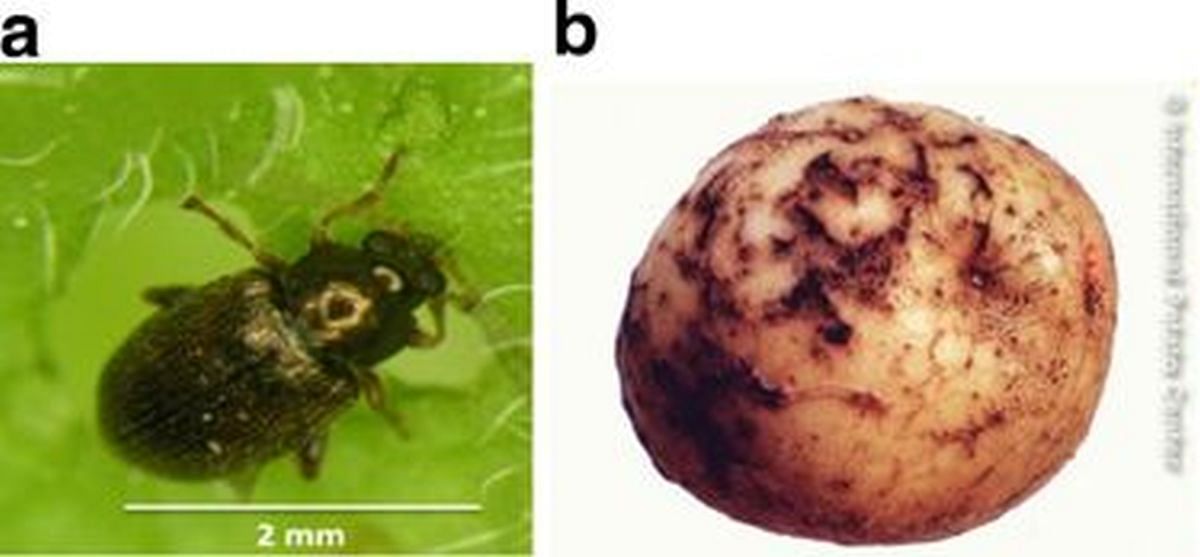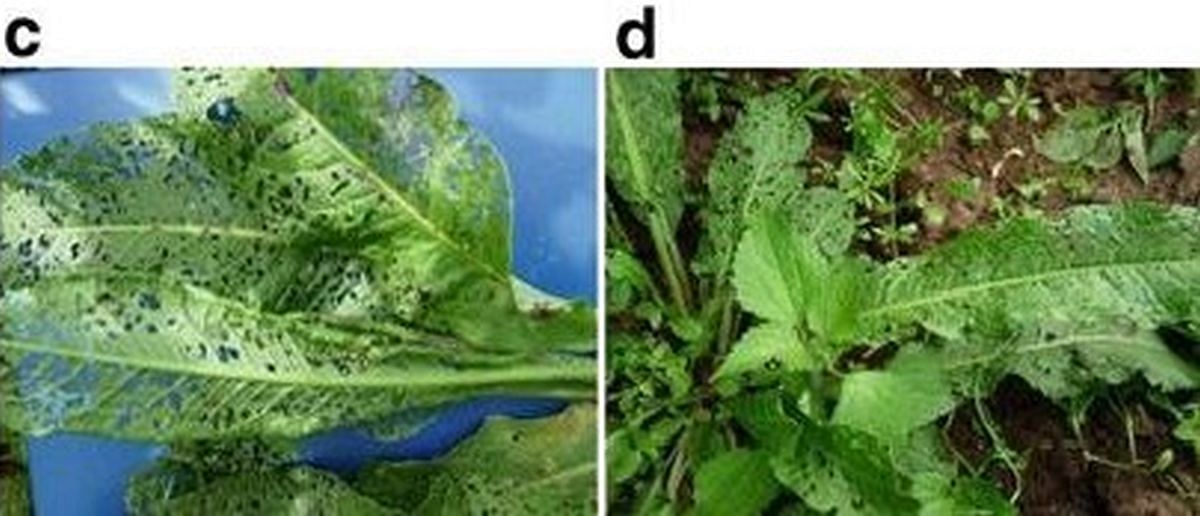Scientific description of the Flea Beetles (2020)
Based on J. Kroschel. et al. (2020) Insect Pests Affecting Potatoes in Tropical, Subtropical, and Temperate Regions. In: Campos H., Ortiz O. (eds) The Potato Crop. Springer, Cham
The authors of this content are Jürgen Kroschel, Norma Mujica, Joshua Okonya, Andrei Alyokhin
Epitrix spp. (Coleoptera: Chrysomelidae)
Distribution
Epitrix spp. is a genus of many flea beetles that are known to feed upon members of the Solanaceae family. Epitrix tuberis Gentner (1944) and E. cucumeris (Harris 1851) are common pests of potato in North America (Malumphy et al. 2016) (images below).
A nonnative pest of potato recently established and causing significant economic damage in Portugal and Spain was identified as Epitrix papa sp. n. and included in the list of quarantine pests in Europe (Eyre and Giltrap 2013; Malumphy et al. 2016; Sanchez and Vergara 2002).
Epitrix yanazara Bechyné (1959) was the major economic important species in the central highlands of Peru (Kroschel et al. 2012) which is a region with a high diversity of flea beetles (Furth et al. 2015).

Adult damage on potato leaves (a) and larval damage on potato tuber (b). (Courtesy: CIP)

Heavy adult damage and infestation on a weed in potato field in Kabale, Uganda (c, d). (Courtesy: CIP)
Host range
The host range comprises potato, tomato, eggplant, tobacco as well as weeds of the family Solanaceae.
Symptoms of infestation
Flea beetles are small beetles and jump easily in the foliage of plants. Their feeding results in characteristic circular holes less than 3 mm in diameter. Larvae that feed on roots, stolons, and tubers also cause damage. They bore the tubers superficially or scratch the skin, thus facilitating penetration of pathogenic fungi (CIP 1996; Larrain et al. 2003; Sanchez and Vergara 2002).
Impacts on production losses
The flea beetles are considered one of the most serious pests threatening the entire EPPO region. In North America, they are ubiquitous. In cases of severe infestation, defoliation by adults may cause leaves to dry completely, thus affecting photosynthesis and plant yield.
Larval damage makes tubers become unviable for sale, and the destruction of the roots can result in plant death (Eyre and Giltrap 2013; Malumphy et al. 2016; Sanchez and Vergara 2002). In Peru, populations increased severely above economic thresholds if no pesticides were applied (Kroschel et al. 2012).
Methods of prevention and control
- Cultural control.
Crop rotation. Removal of host weeds and appropriate soil management to ensure vigorous potato plants contribute to reducing flea beetle populations. - Chemical control.
Many insecticides that are used to control other insect pests of potato are also effective against flea beetles. Potato plants withstand some foliage damage beyond which insecticides are required (CIP 1996; Larrain et al. 2003; Sanchez and Vergara 2002).
